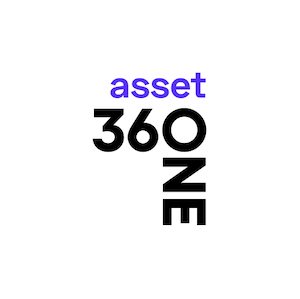‘Anything exotic is a big red flag’: Portal Asset Management CIO and CEO discuss how to dodge scams in crypto
While it is impossible to know whether this trend will continue, over the past years, the crypto market has attracted many investors’ attention.
by CAMILLA GIANNONI Posted
The crypto market had a difficult start to the new year. Bitcoin dropped to USD 35,070.10 on Saturday, its lowest since July. On the same day, Ether was on USD 2,411.77.
Whilst still being over 40% off of their all-time high, from Monday their price started to rise again. While it is impossible to know whether this trend will continue, over the past years, the crypto market has attracted many investors’ attention.
In Switzerland and Liechtenstein, the number of companies specialising in blockchain increased from 919 to 960 from July 2020 to February 2021 according to PWC.
For Deryck Graham, founder and CEO of Portal Asset Management, the industry is set to continue growing and investors have to decide whether or not they want to be a part of it.
Talking to Citywire Switzerland he said: ‘We now view this space a great more bullishly than we did in 2017. At the time non-fungible token (NFT) was a term not used. It’s extraordinary to see how fast this space has filled out. It’s now $2.6tn in size across 14500 different token offerings.
‘Either people start to understand the space and engage with it, or they’ll miss out the opportunity to invest in it. We don’t think the opportunity is going tomorrow, we think it has got years of growth ahead of it, because we are establishing entire new economies based within these extraordinary distributed ledger technologies (DLTs). But it is time to start realising how important this is.’
Navigating the crypto market
But navigating the crypto space does not come without challenges and many years of financial expertise may not always be helpful.
‘Culturally, it’s very difficult for a person who has a great deal of knowledge of how the traditional financial industry works, to suddenly understand this industry. In fact, that’s probably that person’s greatest disadvantage,’ Graham said.
As well as that, operational difficulties and counterparty risks needs to be taken into account, according to Mark Witten, CIO of Portal Asset Management.
‘There is a much bigger risk of fat-finger error, because once you send money somewhere, if you’ve sent it to the wrong address, you can’t get it back, in general. You can trace it, but it is very difficult to retrieve.’
While in traditional fund management using a custodian bank is common practice, the same is not always true when it comes to crypto hedge funds.
Investors also need to pay attention to fund managers’ transparency. While this also applies to traditional fund selection, the complexity of the underlying strategies and tokens may make it more difficult to understand a manager’s strategy when operating within the crypto universe.
‘A lot of the fund managers like to be mysterious and opaque. Some may be pretending that they’re generating alpha, but they are actually just riding beta. In other words, they are just taking market directional bets, and hoping that they are going to trade through the cycle. They’re trying to make what they’re doing sound a lot more sophisticated,’ Witten said.
This can be intensified by the need to justify the management fees they charge, which according to a 2021 PWC study amount to 2.3% on average, and long lock up periods of 1 year on average.
Shifting trends
Witten, who selects strategies for the Portal Digital Fund, said: ‘Anything that stands out as being slightly exotic in operations is a big red flag for us.’
The manager, who aims to build a portfolio of 8 to 10 uncorrelated digital currency trading strategies, uses a due diligence questionnaire template based on the Alternative Investment Management Association (AIMA) one, which fund managers have to fill in. It includes information on the operations, research process, key personnel, portfolio construction and risk management.
Another warning sign for Witten is if a fund starts deviating from the strategy. ‘If they say they’re a market neutral fund, but if they start showing volatility during volatile times then that’s a problem because they shouldn’t be taking market exposure.’
He then looks at the themes he wants to be involved in. ‘We’ve been pivoting the fund away from quant trading towards DeFi, NFTs, and now we’ve added two funds: one does network participation and the other is involved in in the yield farming,’ he said.
He also believes funds have started to change over the past two years.
‘A lot of them have gone from being more quantitatively driven, doing more spread and momentum trading, to becoming increasingly based on fundamentals. People are looking at tokens differently and are focusing more on themes, like gaming. These are the funds we tend to back,’ he said.
Land of opportunities?
If the crypto market used to be dominated by retail investors, this is changing according to Graham. In Q2, Coinbase reported a trading volume of USD 462bn, USD 317bn of which came from institutional investors while USD 145bn came for retail ones.
Part of this could be due to high valuations and low interest rates which make it hard for investors to get good returns in more traditional asset classes.
‘I often compare it to living in Europe in the 1700s and having the opportunity to go to America and getting land for free and building enterprises,’ he said.
‘Institutional investors are starting to ask themselves the question “What am I going to do with money in the bank? What’s gold’s future?” and they are starting to realise that if they deploy just a small percentage of their cash reserves or their investment reserves into the likes of Bitcoin, which is a very standard entry into this space, that that’s going to cause a very positive outcome,’ he said.
The double-edged sword: regulation
Entering an unregulated space often involves considerable risks, it also provides opportunities, and the crypto space is no exception.
‘It’s a double-edged sword,’ said Graham.
‘Until the giants arrive, the opportunities really do exist in these earlier times. Once the regulations are in place, and the large institutions start rolling in, you may see a reduction in margins and returns.’
Countries around the world have radically different views on it too. While a proposed bill in India would ban cryptocurrencies, the canton of Zug introduced the possibility for its residents to use them to pay their taxes.
Despite the crypto market not being fully regulated, some of the funds have systems in place to limit risks. Witten said: ‘The funds we invest in are all licensed by either the FCA, the Hong Kong financial authority or in the US by the SEC. They are also all insured and they are using proper institutional-grade custodians,’ he said.
ESG concerns
The power used to mine some of the most widely used cryptocurrencies raises ESG concerns for many investors.
BlueBay Asset Management CIO, Mark Dowding, who holds a + rating from Citywire, said: ‘Aside from concerns that cryptocurrencies are heavily utilised to finance criminal activities in a non-regulated market and that lax governance of coin exchanges potentially exposes retail investors to catastrophic losses, an increasingly important concern relates to the energy consumption associated with computer-heavy coin “mining” activities.’
According to the Cambridge Bitcoin Electricity Consumption Index, the cryptocurrency currently consumes 134 TWh per year. By comparison Switzerland consumed 56 TWh in 2020.
Graham however said that there are other industries whose consumption is actually higher, including the gold industry. A Galaxy Digital Mining study published in May 2021 estimates that the gold industry utilises roughly 240.61 TWh per year.
‘Bitcoin doesn’t destroy landscapes, it doesn’t do acid mining, it doesn’t produce mercury, it doesn’t do destruction of the Amazon, it’s not transporting gold all around the place. It’s actually enormously more efficient, and it is still the most inefficient token there is.
‘On top of that, most of the gold gets dug out of the ground only to be put back into the ground in the form of a vault. I think you should drill the mine, value it on a bankable level, and then never mine it, tokenize it and sell it instead.’




